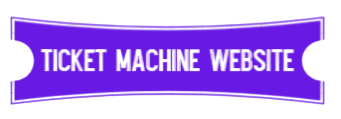Beyond Names and Dates – Diverse Genealogical Resources for Richer Ancestral Stories
Genealogy is more than just a collection of names and dates it is the art of piecing together the tapestry of our ancestors’ lives. While names and dates form the backbone of any family tree, delving deeper into diverse genealogical resources can uncover rich stories and provide a deeper understanding of our heritage. One invaluable resource for enriching ancestral stories is oral history. Family lore passed down through generations can offer insights into our ancestors’ personalities, experiences, and cultural traditions. Interviewing elderly relatives or recording their memories can preserve precious anecdotes that might otherwise be lost to time. These stories add color and depth to our family narratives, breathing life into names on a page. Beyond oral history, exploring local archives and historical societies can yield a treasure trove of information. Census records, property deeds, and newspaper archives provide glimpses into our ancestors’ daily lives, revealing occupations, migrations, and community involvement. For example, a census record might reveal that our great-grandfather was a blacksmith, while a newspaper clipping might recount his involvement in a local labor strike.
Such details offer a window into the challenges and triumphs of past generations. Another avenue for uncovering ancestral stories is DNA testing. While DNA results cannot replace traditional genealogical research, they can complement it by providing insights into our ethnic origins and familial connections. DNA matches may lead to the discovery of long-lost relatives or confirm suspected relationships. Moreover, genetic health reports can shed light on inherited conditions that may have affected our ancestors’ lives. Beyond conventional records, exploring alternative sources such as military records, immigration records, and church registers can provide valuable clues about our ancestors’ lives. Military records offer glimpses into their service, including battles fought and medals earned. Immigration records trace their journeys to new lands, highlighting the challenges they faced and the dreams that propelled them forward. Meanwhile, church registers document key life events such as baptisms, marriages, and burials, providing insights into religious beliefs and community ties.
Photographs and artifacts also play a crucial role in enriching ancestral stories. Old family photographs capture moments in time, preserving faces and expressions that connect us to our past. Examining clothing, tools, and household items passed down through generations can offer clues about our ancestors’ lifestyles and occupations. Each artifact tells a story, linking us to the lives and legacies of those who came before us and read more at www.genealogyvoyage.com. Furthermore, exploring social history can contextualize our ancestors’ experiences within broader historical trends. Studying topics such as migration patterns, economic shifts, and social movements helps us understand the forces that shaped their lives. For instance, learning about the industrial revolution might illuminate why our ancestors left rural villages for urban centers in search of employment opportunities. By placing our family stories in historical context, we gain a deeper appreciation for the resilience and resourcefulness of past generations. Each piece of information adds layers to our family narratives, allowing us to honor the past while gaining insights into our own identities. In the end, the stories we uncover remind us that we are part of a larger continuum, shaped by the triumphs and trials of those who came before us.
